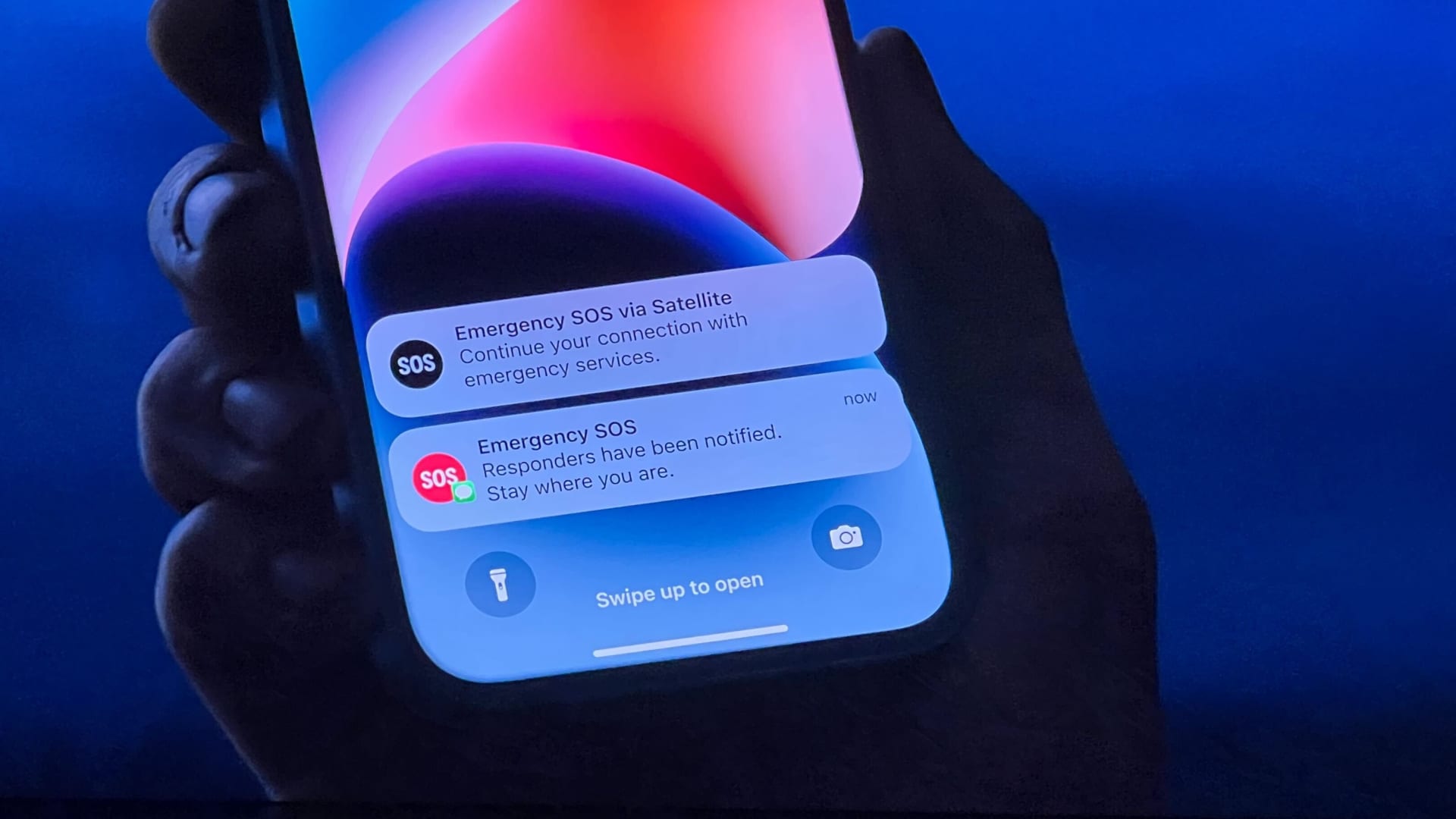When Apple held its annual launch event for the iPhone 13 in 2021, it started with a joyful video featuring jazz dancers celebrating the natural beauty of California (which can be captured with an iPhone camera, of course).
The undertone of Apple’s iPhone 14 launch this week was darker. After zooming in on Apple’s headquarters from space, it kicked off with a video highlighting users who wrote letters to Apple CEO Tim Cook saying that they almost died — but were saved by their Apple Watch calling 911.
“Dear Apple: My dad was flying our small plane to Vermont. I was asleep in the back seat. I woke up when we were crashing into the tops of the trees. The plane broke into six pieces and we were miles away from civilization in the freezing cold. Then, all of a sudden, my Apple Watch started ringing,” said one character named Hannah.
Other characters in the short video told stories of falling into a frozen stream, getting trapped inside a trash compactor and witnessing a cardiac episode in a restaurant.
Saving lives in emergency situations was the major theme of Apple’s launch this year, and many of the most notable new features the company announced were oriented toward safety.
The most significant new iPhone capability this year is called “Emergency SOS via satellite,” which can send a message for help even if there’s no cell service around for miles. Users can also share their location with family or friends in the Find My app.
Apple’s example of how the feature works showed a hiker with a broken leg on top of a mountain ridge calling for a helicopter. Later, Apple mentioned winding back roads as another place where iPhone users might be out of range.
But this feature could be useful in outside wilderness settings. Wildfires, hurricanes and other disasters can cut cell service, and having the ability to contact emergency services or tell your family where you are can literally be a lifesaver in those circumstances.
Another example: Apple’s $799 or more watch, the Ultra, has an 86-decibel siren that can be heard 600 feet away, and compass features that allow the user to retrace their steps without the internet.
As with the satellite feature, Apple advertised it as a helpful tool for backcountry adventurers, but it could also be useful in more mundane settings. Imagine sounding the alarm as a deterrent to an attacker, or using the retracing feature to find your way back to your car after a disaster in your community has interrupted cell service.
Apple also announced this week that iPhones and Apple Watches, using motion sensors, can now call 911 if they detect a car crash has occurred.
“We truly hope you never need it, but that you will feel a little bit safer every time you get in the car,” an Apple presenter said, moments before showing images of a driver getting hit by an air bag in slow motion after crashing.
Apple’s launch events are designed to do one thing: build demand for Apple’s new products. The company now wants to make the iPhone even more “essential” for its users through safety features, giving users reasons not to switch to competing Android devices.
Will these features meaningfully increase iPhone adoption and sales? It turns out, Apple has at least considered the possibility in the past.
In a disclosure with the ESG group CDP published in January 2019, Apple representatives wrote about potential business opportunities stemming from climate change, citing a previous version of the “SOS” feature as an example of Apple’s work to build features for emergency situations.
“As severe weather events become more frequent, consumers may come to value more highly the immediate and ubiquitous availability of reliable mobile computing devices for use in situations where transportation, power and other services may be temporarily interrupted,” Apple representatives wrote.
Apple cited the 9/11 disaster and “extreme weather events” like hurricanes Katrina, Sandy, and Harvey that are occurring more frequently.
“Over time, as people begin to experience severe weather events with greater frequency, we expect an increasing need for confidence and preparedness in the arena of personal safety and the well-being of loved ones,” Apple wrote in the disclosure.
Apple’s not the only consumer electronics company that is developing safety features for its devices. But Apple’s devices also have a robust lineup of health features, like fall detection for seniors and heart monitoring, which underscore its overall safety pitch.
“iPhone is there when you need it most,” one presenter said at the launch event. “That confidence is especially important in moments where your safety is at risk.”
We may be seeing the start of a new messaging strategy at Apple: Its devices are the ones you want when things go wrong.
